If you have a yard, you must regularly take care of the grass and maintain a proper mowing height so that everything looks great and creatures like mice and snakes don’t have a place to hide. This entails cutting it back at regular intervals to keep your yard in good condition while also ensuring that it has an attractive appearance. In this article, let’s talk about how to mow tall grass.
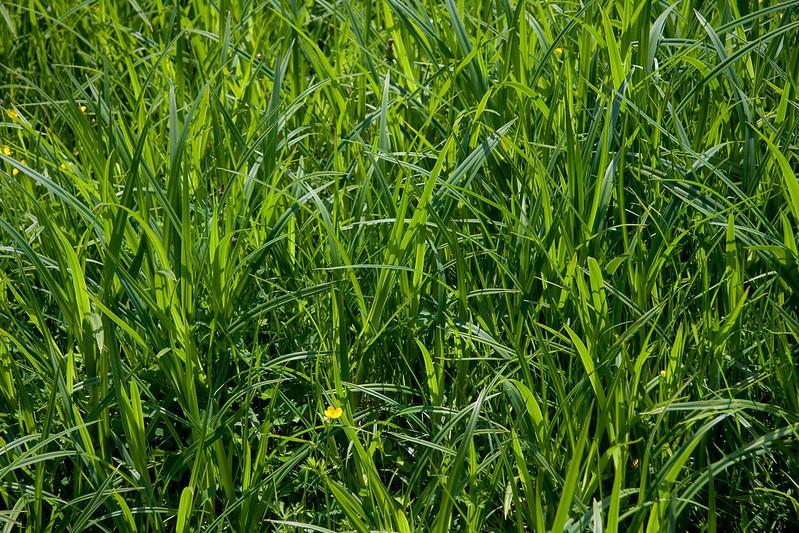
Mowing your lawn frequently helps support the long-term health of your grass.
Keeping up with the maintenance and care of your lawn can be challenging at times. Especially in cases when you haven’t attended to it for some time, whether because of a packed schedule, absence from the house, or other factors.
This results in the growth of tall grass, which is difficult to cut and can lead to a multitude of problems that damage the health, beauty, and overall well-being of a lawn.
Mowing tall grass can be challenging. It causes the mower to become clogged or even stall. Cutting long grass demands additional time, energy, and patience. Also, before cutting it with a mower, you will need to trim it down to a more reasonable height, either with a brush cutter or a string trimmer. In addition, tall grass needs to be mowed at a pace that is slower than that of typical grass.
Continue reading this article if you want some pointers on how to trim exceptionally tall grass. I have compiled a list of everything you need to know and do to tame your messy grass.
Benefits Of Mowing Tall Grass
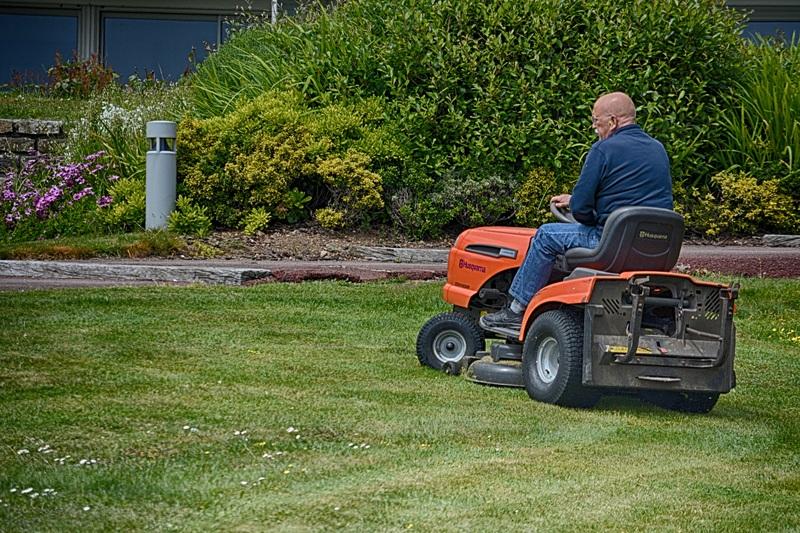
Mowing the grass to a more reasonable height reduces the strain on your mower, thus, increasing its life.
Before we get into the specifics of how to mow long grass, let’s look at the issues that arise when the grass is allowed to grow too and the benefits of cutting tall grass.
Fewer Bugs
Tall grass can provide a haven for many sorts of insects and bugs. Insects tend to make their homes in the lawn’s long grass because of its in-growth.
Unfortunately, insects that carry diseases, such as mosquitoes, ticks, and others, can inflict considerable injury on you or others, not to mention the fact that they are highly irritating.
Better Lawn Health
Longer grass clippings frequently accumulate on the lawn’s surface and are harder to remove. Longer trimming also prevents the turfgrass from receiving sunlight, which is bad for its health.
When you mow your lawn regularly, the shorter clippings are more likely to fall to the ground, where they can decay and add nutrients to the soil.
Extends Mower’s Life
Clippings left over from cutting the taller grass are taller. Also, the volume of clippings is greater and more challenging to handle.
If you don’t mow for an extended period, the grass will go to seed, and its blades will look more like weeds than grass. In addition, long grass could overwhelm your mower and cause the blades to degrade more quickly.
Prevents Lawn Diseases
A lawn with long grass is more likely to become infected with fungus and other illnesses because the longer grass acts as a sponge, retaining moisture in the yard.
This causes the grass to grow unevenly and may give your lawn a rough appearance. Furthermore, there is a good likelihood that the grass will turn yellow or brown.
Better Appearance
A lawn that is not well maintained and is disorderly might have an unattractive appearance. These tall grasses frequently destroy the aesthetic value of a yard.
Furthermore, it makes it harder for the grass to stand itself up, and if it falls onto the grass around it, it suffocates it in the process.
RELATED: Lawn Mower Height Settings | What’s The Best Mowing Height For Lawn Grass?
Tips To Mow Tall Grass

Do not mow tall grass with rusted or dull blades. You will end up doing more harm than good.
Cutting tall grass is not as easy as pushing the lawn mower on your lawn because there is a risk that you might clog your mower or, even worse, damage the lawn.
So, it is always beneficial to seek the guidance of professionals. We have compiled a list of essential tips from experts that will allow you to work rapidly on the overgrown grass.
Tune-Up Your Mower
Check that the blades on your mower are both razor-sharp and in excellent working condition.
Moreover, if you have a gasoline-powered lawn mower, give the engine a good tune-up so that it is ready for the demanding work ahead.
Keep Pets & Children Away
While you’re cutting the grass, ensure pets and kids are in a safe place. In point of fact, no one should be in the area to prevent anyone from getting hurt.
In addition to that, you need to be on the lookout for any animals that might be in your garden.
Inspect The Area For Debris
The portion of the grass that needs to be trimmed needs to be clear of any debris, including tree branches, rocks, and anything else that may be there.
If you don’t take this precaution, the equipment you use to cut the grass will be damaged.
Do Not Mow In Winter
It is not a good idea to mow a tall lawn in the winter since the grass might not be able to handle the strain of being cut short in the cold weather.
Mow Grass In Spring Or Summer
You should attempt to mow the overgrown lawn during the spring or summer when grass grows quicker than other times of the year.
One Third Rule
Always keep the “one-third rule in mind,” which advises that you should never trim more than one-third of your grass in a single pass with the mower.
Mow The Grass When It Is Dry
When the grass is wet, you should not mow the yard. Mowing a lawn that is muddy or wet will cause damage to your grass and the lawn mowers.
Let The Grass Recover
When your lawn is standing straight, stop mowing. Then, wait until your grass has had time to heal and start growing again before you cut it again.
Mow Slowly
Do not attempt to trim all of the tall grass in a single trip. Instead, take your time and be patient while you mow. A slower speed will put less strain on your grass, resulting in a healthier lawn.
Take Breaks
Remember to take frequent breaks when dealing with an overgrown lawn because your mower can quickly overheat. In addition, mowers powered by gas frequently stall after running for an extended period.
RELATED: Lawn Edging Techniques For A Professional Finish | A Comprehensive Guide
Best Tools For Mowing Extremely Tall Grass
When the grass is tall, it has the potential to stall your lawnmower, and if this happens many times in a row, there is a possibility that you might cause damage to your lawn mower.
However, you can get around this issue by mowing the lawn using different instruments.
For example, if you do not have any power tools, start with a Grass Scythe or Sickle and cut the grass down to 3 to 4 inches so you can finally mow.
If, however, you have power tools, begin by trimming the overgrowth to a height of around four to six inches and then mow the grass.
Let’s discuss these tools and their capabilities in a bit more detail.
Grass Scythe
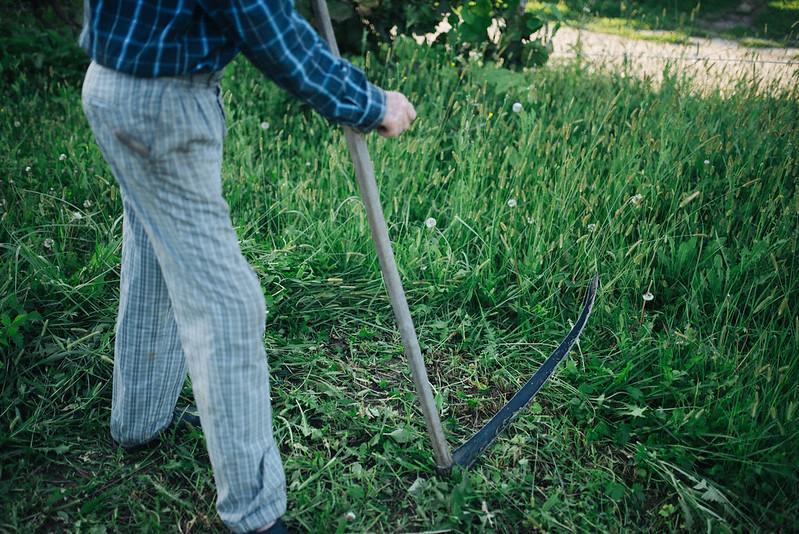
The word “scythe” refers to an instrument with a long, curved blade and a straight or curved handle.
The grass scythe or grass whip is one of the most common types of hand instruments that farmers use to chop long grass. The grass scythe is the two-handed brother of a sickle, which is a single-handed agricultural tool.
Using a scythe to cut tall grass is a pleasurable experience requiring very little physical work. This is because lawn grass is often relatively short, lightweight, and soft and mows particularly well.
Sickle

A sickle is a curved cutting tool used to harvest grain crops in agriculture.
The sickle is constructed with a sharp inner curve, which has been shown to be helpful at cutting tiny areas of grass and weeds.
A sickle is essentially a short implement that is typically used by farmers to cut down a variety of plants, and most often, weeds and grass. The use of a sickle requires only one hand.
To use the sickle, hold it in your right hand as if you were playing golf. The next step is to slide the blade away from your body by making light strokes with your backhand.
Ride-On Brush Cutter

This ride-on brush mower can handle tall, dense grass while putting the user under minimal physical strain.
If you are not a fan of manual methods for cutting tall grass, you can use power tools such as a Ride-On Brush Cutter.
Typically, this tool is employed for chopping or clipping weeds that have grown out of control. In addition, its hydrostatic transmission allows for seamless adjustments when trimming across rough terrain.
Air-suspended seats alleviate worker weariness after long shifts. They differ from standard lawnmowers in that they often have swing tip blades and a wider range of cutting heights.
When it comes to efficiency, it appears that if you are able to knock anything over with your lawn mower, a ride-on brush mower will chop it down; this means that other than tall, messy grass, it can cut saplings, shrubs, weeds, old timber, and other similar things.
Weed Eater
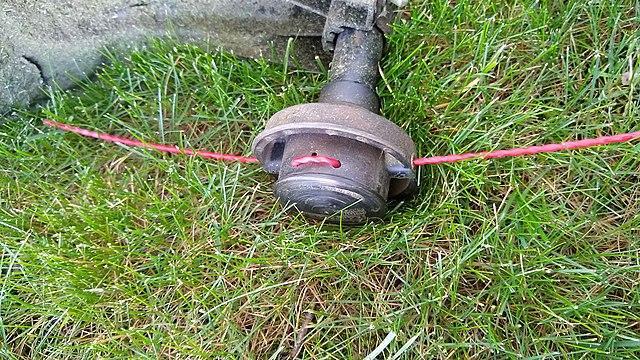
Despite what its name might suggest, weed eaters can also be used to trim tall grass.
If you have your lawn at home, a weed trimmer is one of the essential items you need to have at your disposal.
A weed eater is one of the most crucial instruments for lawn maintenance that you need to have to keep your lawn area in good condition.
Some models of weed eaters come with trimmers that can be used for various purposes. For instance, it can be used to cut grass and weeds and make cuts in the more inaccessible areas of your garden.
RELATED: Lawn Sweeper: Is It Worth The Money? (and Our Top Picks)
How To Mow Tall Grass?
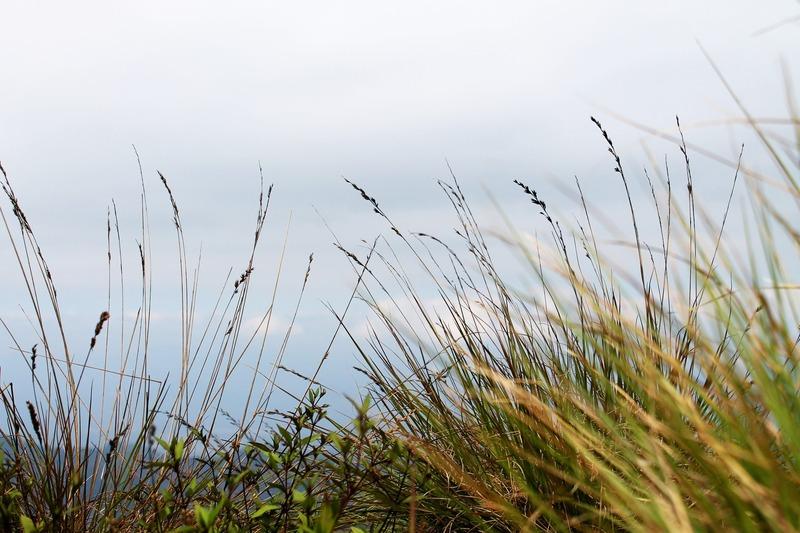
If the grass is tall, it will be hard to cut with your lawnmower.
Now that you understand why mowing tall grass can be beneficial for your grass, what tips and tricks you can use to achieve it, and what instruments are appropriate for the purpose, the next step is mowing long grass.
If you complete the following steps correctly, your once-jungle-like lawn will soon be transformed into how it should look.
Clean Debris & Large Objects
The most essential step is to clean up your yard and get rid of any debris that may be there. Any debris can make it difficult for the blade on the lawn mower to do its job.
Trim Tall Grass
The height of the grass determines the first step at the start. If the grass has grown to an excessive height, mowing it with your lawn mower will be difficult.
So, try to avoid cutting too long grass with the mower. Depending on the size of your garden, you can use a string trimmer, brush-trimmer, or sickle to cut the very long grass.
This equipment will assist you in bringing the tall grass down to a more manageable height for your lawnmower and will lessen the amount of work that needs to be done.
Mow The Grass
Once you have trimmed your grass to a more manageable height, it is time to mow it with your lawn mower. Be cautioned that this will be a difficult chore that will take a long time because the mower may have trouble cutting through the long grass.
Set your mower to the highest setting before you start mowing. This will ease the strain that your grass is under and prevent it from becoming damaged.
You should be aware of the fact that once you have completed mowing your lawn, it may appear terrible and unpleasant, but you shouldn’t be concerned about this. It will be some time before things get better.
Make A Final Cut
The third and final pass is necessary in order to get the lawn to its desired height at this point. Adjust the cutting height of your mower to the typical setting, which should be between 2 and 3 inches.
This ensures that the lawn is cut uniformly, resulting in an even distribution of grass growth across your lawn.
Water & Fertilize The Lawn
After trimming the grass, give the yard a good bath with water. In addition, given that the grass has been put through so much strain, you should fertilize your lawn after completing the above steps.
Generally, fertilizers are administered during the spring, early summer, and late fall seasons. During this time, mowing is also a frequent task.
Final Thoughts
It’s safe to say that mowing the lawn isn’t everyone’s favorite duty around the house. Letting your grass become overgrown and out of control is too easy.
However, allowing that will only result in increased labor in the long run. Moreover, allowing your lawn to become overgrown can inflict stress on the grass, resulting in an unhealthy lawn.
There is no need for alarm if you have a lawn with grass that is allowed to grow very long and are not looking forward to cutting it.
If you carefully follow the steps outlined in this blog post, you will soon have a beautiful lawn that is easily maintained.
Remember that using the correct tool for the job will result in a better, faster, and less stressful job. Once you’ve learned the use of a weed eater or a scythe, you’ll be able to complete the task without the need for expert assistance!
Frequently Asked Questions (FAQs)
What is the best way to mow tall grass?
The ideal approach when dealing with really tall grass is to first use a grass trimmer or brush cutter to reduce the height of the top layer of grass to a manageable level before using a mower.
Additionally, tall grass needs to be cut slowly at first. Moreover, regardless of height, the grass should be chopped one-third of its original length.
Can lawn mowers cut tall grass?
The maximum height setting for lawn mowers is typically 4 inches. By positioning the lawn mower as high as it will, you may cut grass 6 to 8 inches tall.
If the grass is taller than this, you should cut it first with a trimmer so that you don’t harm your mower.
Which tool is used for cutting tall grasses?
You may cut grass and weeds growing too tall or in spots where your mower can’t reach with a string trimmer. It is an excellent tool for your yard. People also favor these instruments since using them does not require a great deal of physical labor on their part.
What happens if you let the grass grow too long?
It is detrimental to let your lawn grow too long. A height greater than three inches is troublesome for the majority of grasses.
It becomes challenging for long grass to support itself after it reaches this height and beyond. This leads it to droop over the grass around it, suffocating it in the process.
Is it OK to cut the grass when wet?
It may be tempting to mow your lawn as soon as the rain stops, but it’s best to wait until the grass is completely dry.
Your mower may become clogged with wet grass clippings and sputter or choke. Additionally, a mower will struggle to cut the lawn when the grass is wet.
Sources for Further Reading
Mowing practices for healthy lawns – University of Minnesota Extension Service
Guidelines for Mowing Lawns Properly – University of Illinois Extension Service
Mow high for weed and grub control – Michigan State University Extension Service
Editor’s Recommendations
Milorganite Vs. Scotts | Which Is Best and Which Should You Use?
Nitrogen Vs. Iron For Lawn | Which To Use & When To Use It? A Comprehensive Guide
Lawn Edging Techniques For A Professional Finish | A Comprehensive Guide







